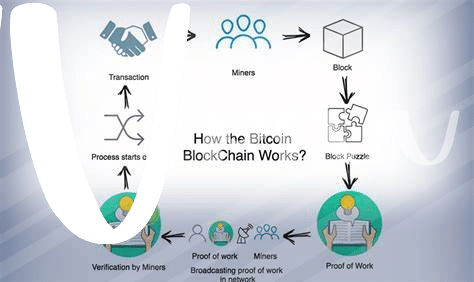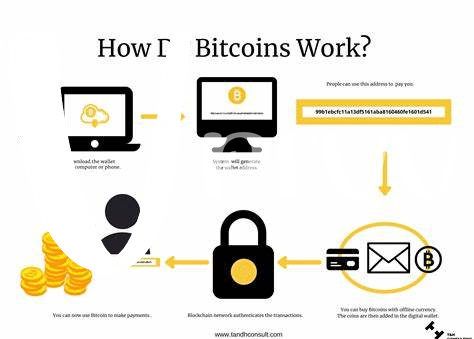What’s Bitcoin and Why It Matters? 🌍

Imagine a world where you can send money anywhere, to anyone, without having to go through a bank or pay hefty fees. Enter Bitcoin, a type of digital money that changed the game by letting people do just that. Created by a person, or possibly a group, using the name Satoshi Nakamoto in 2009, it’s not run by any single company or government. Instead, it works on a tech called blockchain, a kind of digital ledger that is very hard to cheat or change. What’s super cool about Bitcoin is that it’s like having your own bank in your pocket. You can buy things, invest, or send money to someone on the other side of the world. More than just a way to pay, Bitcoin sparked a revolution in how we think about and use money, leading to the creation of many other digital currencies. Today, it stands as a new form of money that is owned by the people who use it, far from the control of big banks and governments.
| Year | Bitcoin Milestone |
|---|---|
| 2009 | Bitcoin Network Launch |
| 2010 | First Real-world Transaction (10,000 BTC for two pizzas) |
| 2017 | Bitcoin Price Peaks at around $20,000 |
| 2021 | Bitcoin Reaches New All-time Highs (over $60,000) |
Unpacking the Mystery: What Is Nakamoto Consensus? 🔍
Imagine trying to play a game where everyone needs to agree on the rules, but no one is in charge. That’s a bit like how Bitcoin works, and it does so using something called Nakamoto Consensus. This might sound complex, but it’s really just a clever way to make sure everyone playing the Bitcoin “game” follows the rules. It’s named after Bitcoin’s mysterious creator, Satoshi Nakamoto, and is the secret sauce that allows Bitcoin to operate smoothly without any one person or company controlling it. Essentially, it’s a democratic system for making decisions in the Bitcoin network, where the majority rules.
This system works through a process called “mining,” but don’t picture miners with helmets and pickaxes. Here, miners are computers solving complex puzzles. When they solve these puzzles, they get to add new information to the Bitcoin ledger, a public record of all Bitcoin transactions. But here’s the kicker: by solving the puzzle, they also get to propose what the next page of that ledger should look like. If other miners agree with their proposal (which they do by starting to work on the next puzzle based on this new page), it becomes part of the official record. This process ensures that only valid transactions are recorded, keeping Bitcoin safe and sound. So, Nakamoto Consensus is really about everyone working together to agree on the state of the Bitcoin ledger. For a deeper dive into how Bitcoin’s unique qualities not only impact its own volatility but also influence broader trends, check out https://wikicrypto.news/bitcoins-influence-on-social-media-conversations-and-trends.
How Nakamoto Keeps Bitcoin Safe and Sound 🔐

Imagine a world where secure transactions online aren’t just wishful thinking but a reality. This is what Nakamoto Consensus offers the world of Bitcoin. By using a clever combination of rules and incentives, it ensures that every transaction on the Bitcoin network is verified and trustworthy without needing a middleman. Think of it as a virtual neighborhood watch, where the participants, or miners, use their computing power to solve complex puzzles. This process, known as mining, helps to secure the network. Each solution to a puzzle is proof that a miner has put in the work, contributing to the blockchain’s growth and security. This not only keeps the network safe from fraud and attacks but also makes it incredibly tough for any single player to have control over what’s recorded in the blockchain. In essence, Nakamoto Consensus turns the competitive spirit and computational power of miners into the guardian angels of the Bitcoin network, ensuring it remains robust and trustworthy. Through this ingenious method, Bitcoin’s foundation remains rock solid, nurturing trust and security in a digital age.
Mining: the Heartbeat of Bitcoin’s Network 💓

Imagine a world where digital gold pulses through the internet, powered by the collective effort of thousands of individuals. This is the reality of Bitcoin, a digital currency that thrives because of a process known as mining. In essence, mining is like a giant, global competition where individuals use powerful computers to solve complex mathematical puzzles. The first one to solve the puzzle gets to add a new block of transactions to the blockchain, securing the network and, in return, earning some bitcoin as a reward. This relentless pursuit not only keeps the network alive but also protects it from attacks, making it a robust system. The brilliance of mining lies in its simplicity and its power to secure the vast network that is Bitcoin’s backbone. For those scratching their heads over how this all works and why it matters, a journey through debunking common bitcoin myths and misconceptions explained will shed light on the intricate dance of security and incentive that keeps Bitcoin ticking.
Solving Puzzles for Proof: Work Vs Reward ⚖️
Imagine a world where every time you solve a jigsaw puzzle, you earn a piece of gold. That’s kind of how Bitcoin mining works. People use powerful computers to solve complex mathematical problems or “puzzles.” When they solve one, they are rewarded with Bitcoin. This process is known as “proof of work.” It’s a clever way to make sure that new Bitcoins are created at a steady pace and not all at once. This system also keeps the network secure: to tamper with Bitcoin, you’d need to out-compute everyone else, which is practically impossible. The reward for solving these puzzles isn’t just in Bitcoin. Miners also get transaction fees, adding another cherry on top. However, mining isn’t all gold and glam; it requires significant electrical power and sophisticated hardware, making it a costly endeavor. So, the balance between the effort (work) and the reward is a delicate one. Here’s a quick glance at how this balance has evolved:
| Year | Reward Per Block (BTC) | Notable Changes in Mining Difficulty |
|---|---|---|
| 2009 | 50 | Relatively Easy |
| 2012 | 25 | Increased |
| 2016 | 12.5 | Substantially Harder |
| 2020 | 6.25 | Hardest Yet |
As the table shows, the reward diminishes over time, but the difficulty of the puzzles tends to increase, reflecting the ever-evolving balance between the work miners do and the reward they receive.
The Future: Will Nakamoto Consensus Hold Up? 🚀

As we zoom out to look at the horizon, it’s clear that the world of Bitcoin and, by extension, Nakamoto Consensus, stands on the brink of new challenges and opportunities alike. In the heart of this digital revolution, Nakamoto Consensus has proven itself as a sturdy backbone, ensuring Bitcoin’s reliability and security against all odds. But as we advance, questions bubble up about its scalability, energy consumption, and the emergence of new technologies that could either pose threats or offer enhancements. Will this groundbreaking protocol adapt and continue to provide the foundation for Bitcoin’s success, or will it require tweaks to stay relevant? The road ahead is as exciting as it is uncertain. Yet, one thing’s for sure: the influence of Bitcoin stretches far beyond the financial realms, touching the corners of popular culture and even the political scene, as seen with political campaigns accepting bitcoin donations explained. As we navigate through these evolving landscapes, Nakamoto Consensus isn’t just a testament to Bitcoin’s past; it’s a beacon lighting the path toward an innovative future. 🚀💡🔍
